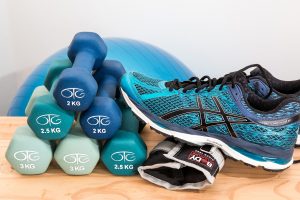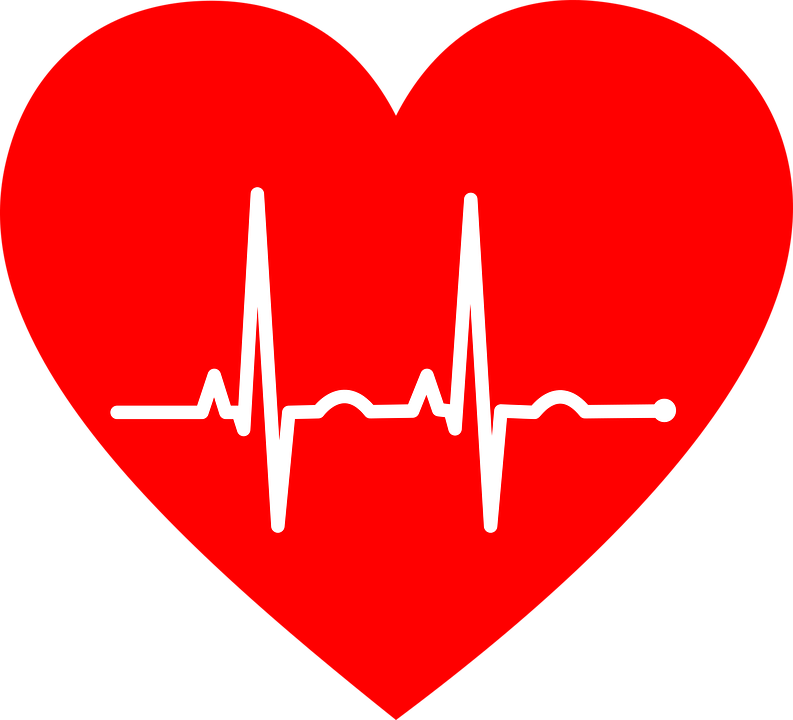With the new year many of us are refocusing on our health and how to develop, improve, or maintain a healthy life style. A number of patients have asked about High Intensity Interval Training (HIIT). A large amount of information is available (a Google search yields 25,600,000 results) so I felt it would be a good topic to discuss and summarize in this newsletter.
Before getting into the specifics of HIIT, below is a review of current recommendations on physical activity, last updated in 2011, from The American College of Sports Medicine. 
- At least 30 minutes of moderate-intensity physical activity (working hard enough to break a sweat, but still able to carry on a conversation) 5 days per week, or 20 minutes of more vigorous activity 3 days per week.
- Strength training a minimum of 2 days a week, with 8-12 repetitions of 8-10 different exercises that target all major muscle groups. (1)
What is High Intensity Interval Training (HIIT)?
HIIT is a method of training that involves repeated bouts of high intensity efforts that range from 5 seconds to 8 minutes followed by recovery periods of varying lengths. (2)
This type of exercise can give maximum health benefits by boosting natural growth hormone levels, increasing muscle mass, increasing metabolism and improving cardiac conditioning in the shortest amount of time spent exercising.

5 Major Benefits of HIIT
1. Cardiovascular Benefits
- Improves cardiovascular functioning. Compared to endurance exercise, there is a 10% greater amount of blood pumped per beat. This aids in increasing blood flow and oxygen supply to the muscles you are working during exercise.
- Increases maximum oxygen consumption (V02max). VO2max is the uppermost ability of the body to take in, distribute and utilize oxygen for energy production, and it has been shown to be 6% higher with HIIT vs. continuous aerobic exercise. (3)
- Lowers blood pressure.
- Decreases oxidative stress and inflammation.
- Improves endothelial function. The endothelium lines the inner walls of vessels and dysfunction of this layer is related to cardiovascular events.
2. Metabolic Benefits
- Helps decrease the risk of pre-diabetes and diabetes. HIIT lowers fasting blood sugars through greater insulin sensitivity in the muscles. This allows the exercising muscles to take in, store and use glucose more efficiently for fuel. This type of exercise also appears to have a more pronounced effect on the Beta cells in the pancreas, stimulating them to produce more insulin. Bottom line is that HIIT helps the body produce more insulin and allows it to function more efficiently, decreasing the risk of pre-diabetes and diabetes.
- Increases HDL and lowers Triglycerides and free fatty acids.
- Increases fat oxidation or fat burning compared to moderate intensity exercise.
- Added caloric expenditure while at rest benefits weight management. HIIT causes the body to expend energy or burn calories for a longer period of time after exercise. Following HIIT caloric expenditure remains elevated as the muscle cells continue working, often times for many hours, until they return to their pre-exercise state. (4).
3. Benefits to Muscles
- Causes an increase in mitochondria, the energy factory of the cell. The mitochondria produce energy for the body by breaking down carbohydrates and fats, thus the greater the mitochondria density, the greater the fat burning, and energy or fuel available for the working muscles.
- Builds lean muscle mass more efficiently, while decreasing abdominal fat, as compared to continuous aerobic exercise.
- Delays onset of muscle fatigue and reduces muscle soreness after exercise. HIIT improves muscle buffering capacity – the ability of the muscles to neutralize lactic acid, which contributes to muscle soreness after exercise. (5)
4. Hormonal Benefits
Aids in lean muscle building and metabolism due to the boost in natural production of Human Growth Hormone (HGH). It has also been touted as an anti-ageing hormone that helps in keeping us young, strong, and more importantly, healthy.A study funded by the National Institutes of Health found that compared with steady state endurance exercise, men who participated in HIIT had a greater increase in free testosterone levels up to 12 hours after exercise. (6)
5. Other Benefits
Increases enjoyment of exercise and results can be achieved with shorter exercise times. HIIT can be used during walking, jogging, swimming, elliptical, bike and fitness classes.
How to Implement HIIT into Your Exercise Plan

If you are sedentary and/or have cardiovascular disease or risks for cardiovascular disease, I recommend that you schedule an appointment with me to discuss what would work best for you. In general, it is often times best to develop a base level of fitness by working up to consistent aerobic activity 3-5 times a week for at least 30 minutes. Once you have reached a basic level of fitness it will be easier to implement HIIT 2-3 times a week.
The are many routines you can utilize, but I will share a couple common ones:
- The first is “10-20-30 interval training”, developed by Danish researchers. (7) After a 5-10 minute warmup you jog (or row, spin, swim, use elliptical etc.) for 30 seconds at a comfortable speed. Then increase the pace to a moderate difficulty for the next 20 seconds. For the last 10 seconds you go all out. Build up to repeat the circuit 4 or more times. Then cool down for at least 5 minutes.
- A different approach is step-wise intervals, where you “step up” intensity based on your target heart rate. The formula to determine your maximum heart rate is 220 – your age. Just as noted above, you can use most any exercise modality. After warm-up, the first interval is for 30 seconds at 50% maximum heart rate, followed by 60-90 seconds of recovery at a comfortable pace. Do the same circuit at 60% max heart rate, then70%, then 80%, then 90%. Do this 2-3 times a week. After a month you can start adding intervals at 90-95% max heart rate based on the level of fitness you have obtained.
For a quick review and guide to HIIT, refer to the High Intensity Interval Training brochure.


1. Med Sci Sport Exerc 2011 July;43(7):1334-59.
2. Sports Medicine 2001;31(1):13-31.
3. Med and Science in Sports and Exerc 2004;36(11):1871-75.
4. Journal of Sports Science 2006;24(12):1247-64.
5. Klein, Mellett. HIIT: Rehab Considerations for Health and CV Risk. APTA 2015
6. Journal of Endochrinology Invest. 2012 Dec;35(11):947-50.
7. Applied Physiology 2012 July;113(1):16-24
